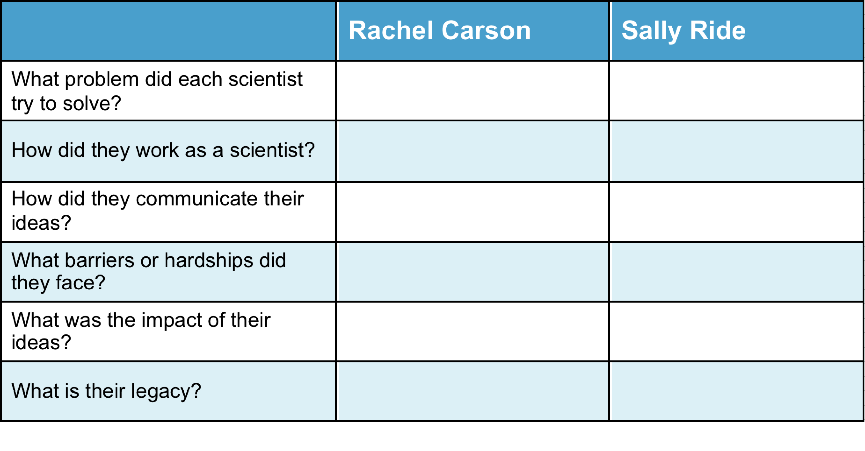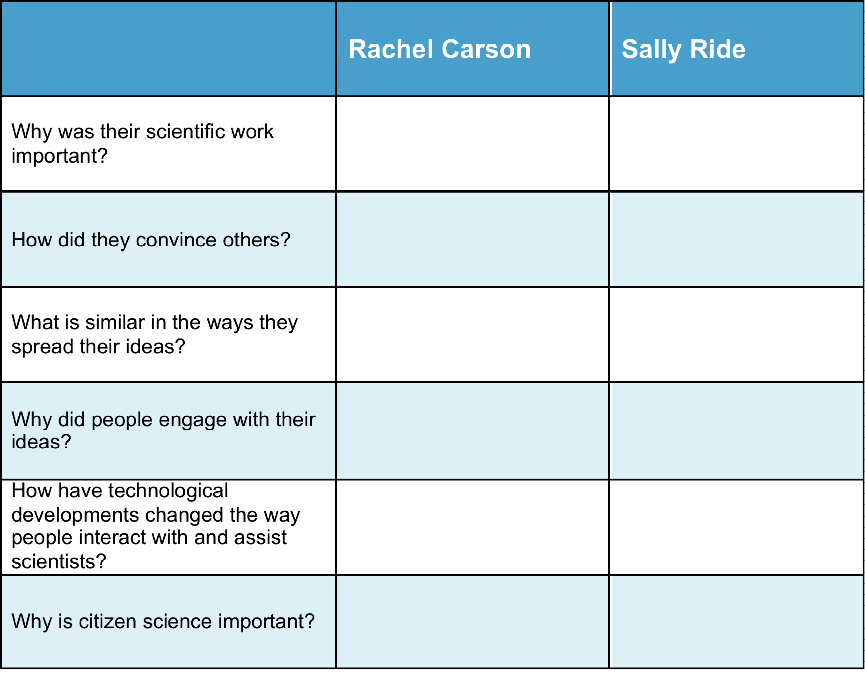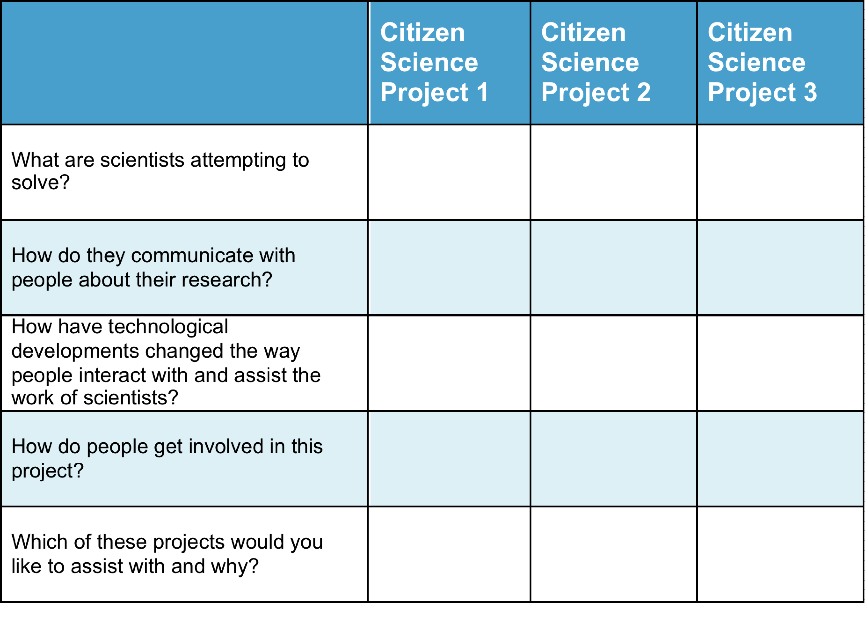Information for Teachers
Curriculum links
Australian Science Standards
SS01.4 World views recognise the dependence of living things on healthy ecosystems, and value diversity and social justice
SS01.5 World views are formed by experiences at personal, local, national and global levels, and are linked to individual and community
UIS (ACSHE083) Scientific knowledge is used to predict possible effects of human and other activity and to develop management plans or alternative technologies that minimise these effects
New Zealand Science Achievement Objectives
NS: Scientists’ investigations are informed by current scientific theories and aim to collect evidence that will be interpreted through processes of logical argument
PEB: The interactions between the solar, lunar and Earth cycles and the effect of these on Earth
Helpful websites
You may want to direct your students to some or all of these websites to help with their investigations.
Students may want to learn more about each scientist. They can do a search by naming the person and adding a topic like Rachel Carson+animals, Rachel Carson+research, Sally Ride+space+inventions
https://www.ducksters.com/biography/scientists/rachel_carson.php
How to search the internet
1 Keep your request short
Fewer words will give a more accurate search.
2 Choose exactly what you want
For example: Arctic Circle Climate
3 Use quotes
Double quotes around a set of words tell the search engine to consider those exact words in that exact order without any change. For example: “Arctic Circle Climate”
4 Use the plus sign (+)
If you add a plus sign (+) between words, the internet will search for all the words. For example: migrate+birds+whales+mammal
5 Use the minus sign (–) to say what you don’t want
Use a minus sign (–) to show words you do not want to appear in your results. For example: if you search for burrowing animals and do not want mammals in your search, –mammals will exclude mammals. Note that you need to put a space before the minus sign for the word to be excluded.
6 Be very clear about what you don’t want
Part 1
Ask questions and make predictions
After reading Science for the People, you may have many questions about passionate scientists who have involved people in their research activities or how people become citizen scientists.
List your questions.
- Compare your list with questions that others have.
- Choose a question you would like to investigate.
- You can work alone, with a partner, or in a small group.
You may want to choose one or more of these questions to investigate
Q1. What is a scientific idea?
Q2. What technologies are used to communicate scientific ideas?
Q3 Why do particular scientific ideas become powerful?
Q4. What is citizen science and how do people become involved?
Go to Part 2 Plan and investigate →Part 2
Plan and investigate
Do searches in the internet or in books or talk to people who can help to find the information you are looking for.
Your teacher may suggest suitable websites for further information.
Go to Part 3 Record and analyse data →Part 3
Record and analyse data
Find a way of recording your information that will allow you to see any patterns in the data.
Data Chart for Science for the People
 Download Chart
Download Chart
Go to Part 4 Evaluate the information →
Part 4
Evaluate the information
1. Look over the information you have gathered and the patterns you have found.
Why was their scientific work important?
How did they try to convince others?
2. Search for other patterns.
What was similar about the ways in which these scientists spread their scientific ideas?
Why did people engage with their scientific ideas?
What is citizen science?
Why is citizen science important?
3. Makes notes about what you find.
Go to Part 5 Communicate and share ideas →Part 5
Communicate and share ideas
Look over all of the information that you have gathered in your investigation.
What are the most important ideas about involving people in scientific research?
Make a chart showing the most important ideas.
 Download Chart
Download Chart
 Download Chart
Download Chart
← Return to menu
